As an American Eskimo Dog owner, you’ve probably experienced your fair share of tumbleweeds of fur drifting across the floor. While their luscious white coats give them an angelic appearance, the shedding situation is far from heavenly. But don’t let that deter you – with the right tips and tricks, you can keep your home fur-free and your Eskie looking fabulous.
This comprehensive guide will cover everything you need to know about managing shedding in your American Eskimo Dog. You’ll learn why they relieve so much, how seasonal changes and genetics impact shedding, and most importantly – how to reduce shedding through grooming, diet, and more. Arm yourself with litter rollers and read on to outsmart even the fluffiest shedding seasons.
Table of Contents
- 1 Why Do American Eskimo Dogs Shed So Much?
- 2 How Do Seasonal Changes Affect Shedding?
- 3 Does Genetics Influence Shedding?
- 4 Daily Shedding Vs. Blowing Coat: What’s the Difference?
- 5 How Much Shedding Should You Expect?
- 6 Tips to Reduce Shedding in American Eskimo Dogs
- 7 How to Groom an American Eskimo Dog’s Coat
- 8 How Often to Bathe an American Eskimo Dog
- 9 Shedding Prevention Tips for American Eskimo Dog Owners
- 10 American Eskimo Dog Shedding: Final Tips
- 11 Related posts:
- 12 American Eskimo Dog: Breed Facts & Care
- 13 Unveiling the American Eskimo Dog Temperament: A Detailed Guide
- 14 Complete Guide to Raising an American Eskimo Puppy
- 15 American Eskimo Dog Colors: Complete Guide
Why Do American Eskimo Dogs Shed So Much?
To understand the volume of shedding in this breed, it helps to first look at their coat anatomy. American Eskimo Dogs have a dense double coat consisting of:
- An outer coat layer of long, straight guard hairs that protect the skin and repel dirt/moisture. This topcoat gives them that signature fluffy appearance.
- A soft, thick undercoat below the guard hairs provides insulation from cold temperatures.
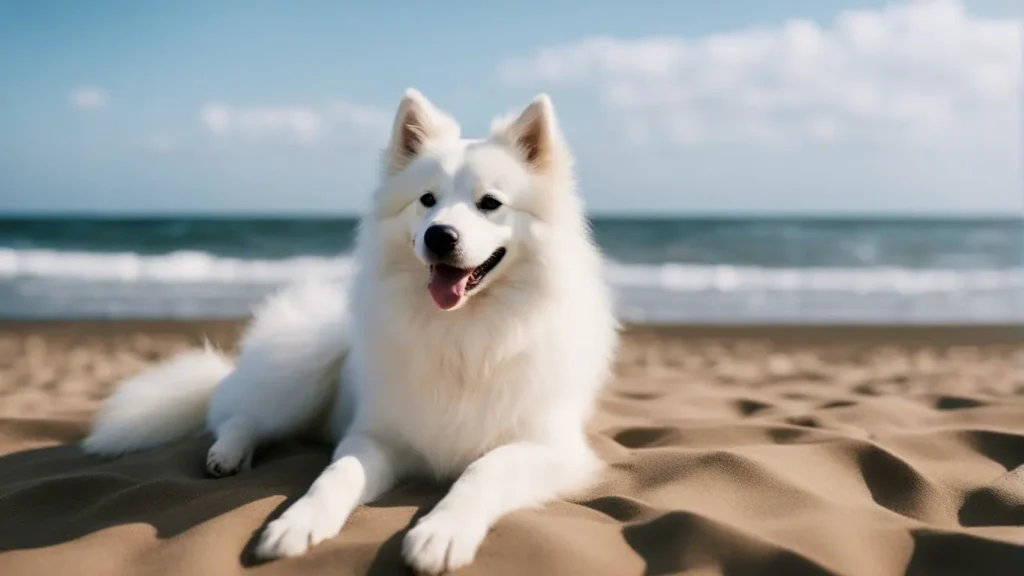
This double coat is what makes the breed perfectly adapted for harsh climates. But it also means they shed a lot more than single-coated breeds. As the undercoat grows and sheds according to seasonal changes, it ends up all over your furniture in tufts.
On top of that, Eskies have what is known as a “stand-off coat.” This refers to the topcoat standing out from the body instead of lying flat. This quality gives them that distinctive plush look. But it also means more surface area for loose dead hairs to escape.
So, in summary – the dense double coat, plus the stand-off quality of the topcoat, makes this breed prone to heavy shedding episodes. But don’t worry, with the proper grooming regimen, you can manage the fur fury.
How Do Seasonal Changes Affect Shedding?
American Eskimo Dogs shed moderately year-round. But during spring and fall, shedding kicks into high gear.
They shed their thick winter undercoat in the spring as temperatures warm up. And in the fall, they shed the lighter summer undercoat for new winter insulation.
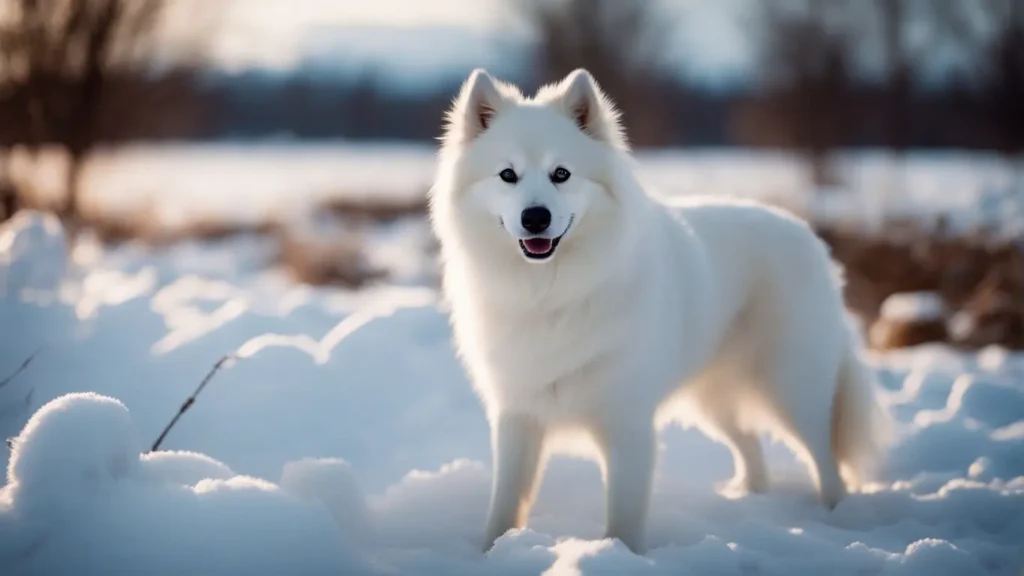
This seasonal shedding is known as “blowing coat” – when tufts of undercoat fall out in clumps over several weeks. You may end up with enough fur to stuff a pillow! Blowing coat is a normal process that ensures your Eskie transitions between seasonal coats.
Some signs your American Eskimo Dog is blowing coat:
- Tufts of fur come out easily when brushed
- More dander and loose fur floating around
- The coat appears thinner as the undercoat sheds out
- You can see skin more quickly through the fur
During non-shedding seasons, you’ll just deal with the normal shedding associated with the breed. So be prepared for a flurry of fur during spring and fall!
Does Genetics Influence Shedding?
Absolutely! Every dog is unique, and shedding tendencies can vary quite a bit between individual American Eskimo Dogs.
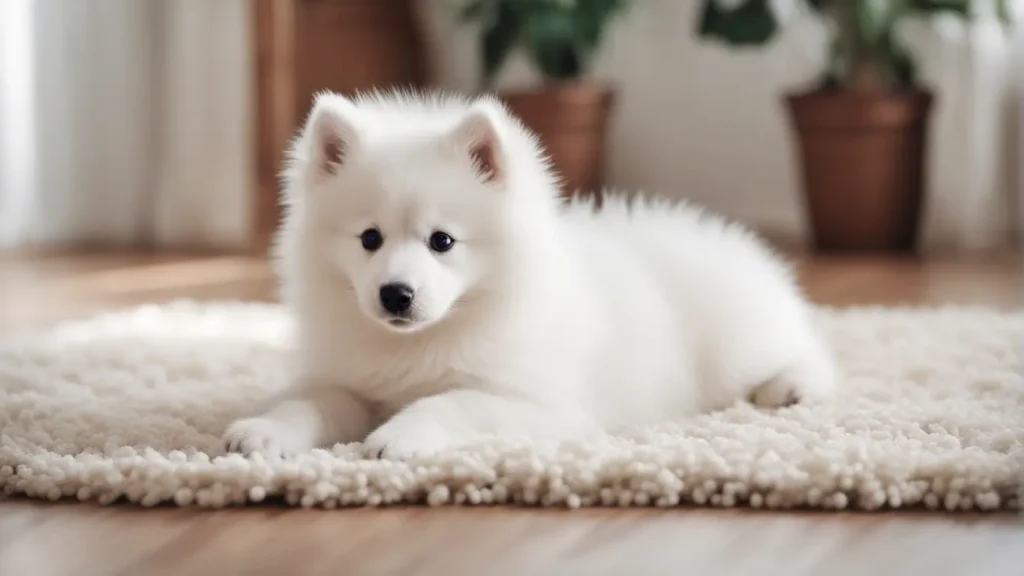
Some contributing genetic factors:
- Coat Density: Dogs with denser undercoats tend to shed more.
- Coat Length: Longer topcoats mean more loose fur floating around.
- Skin Condition: Dry, flaky skin can lead to increased shedding.
One Eskie sheds very minimally, while another leaves tumbleweeds of fur behind them everywhere they go. When adopting an American Eskimo Dog, ask about the parents’ coats to understand what to expect. But be prepared for heavy shedding no matter what.
Daily Shedding Vs. Blowing Coat: What’s the Difference?
New Eskie owners are sometimes confused about the term “blowing coat.” What’s the difference between regular daily shedding and full-blown coat blowing?
Daily Shedding
This is the baseline shedding you can expect year-round. Daily grooming helps remove loose hairs and prevents mats. Signs include:
- Finding stray hairs on furniture, clothing, etc.
- Seeing some fur come off when brushing
- Vacuuming/lint rolling frequently to clean up fur
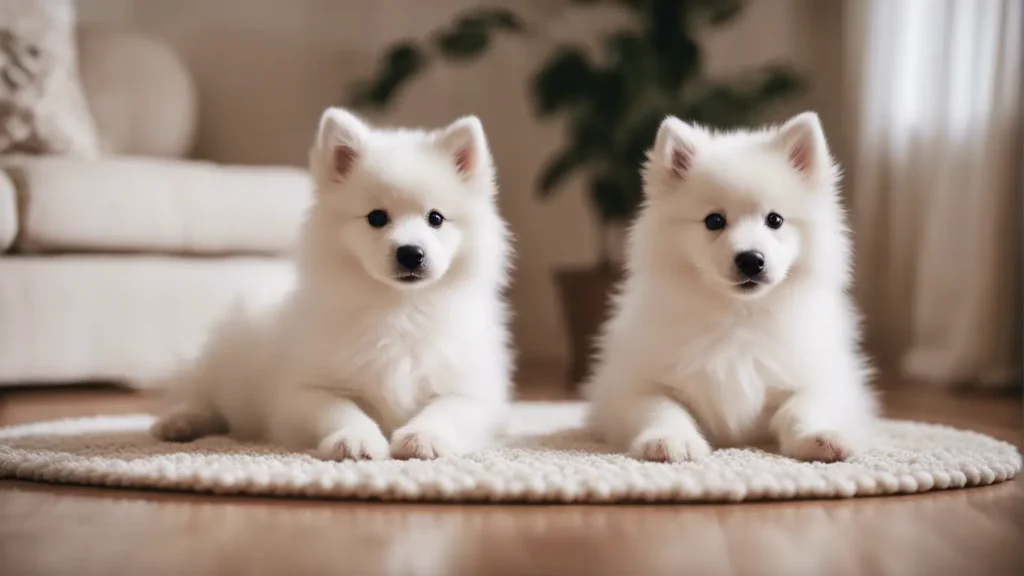
Blowing Coat
During spring and fall, shedding is excessive due to the undercoat blowing out. Characterized by:
- Large tufts of undercoat coming out in clumps
- Dramatic increase in the amount of loose fur all over
- Appearance of “bald spots” as undercoat sheds out
- Intense grooming is required to control loose hair
- Fur tumbleweeds are blowing across your floors!
Blowing coat lasts 4-6 weeks as the old undercoat makes way for new growth. By understanding the difference, you can better manage seasonal shedding.
How Much Shedding Should You Expect?
As a heavy-shedding breed, American Eskimo Dogs shed more than most other breeds. Here’s an overview of how much shedding to expect:
Daily Shedding
- Light shedding consistently year-round
- 1-2 cups of loose fur removed per weekly brushing
- Regular vacuuming is needed to control fur on floors/furniture
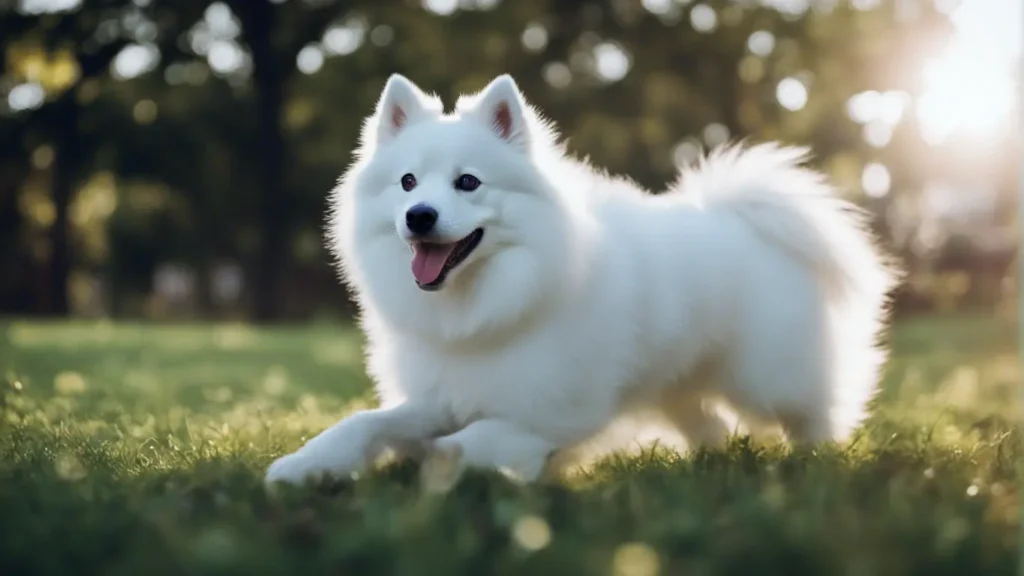
Blowing Coat
- Excessive shedding during spring and fall
- Daily brushing removes handfuls of undercoat
- It can leave piles of fur behind on the floor if not controlled
- May swallow large wads of loose fur when grooming
While daily shedding is manageable with regular grooming, blowing a coat takes extra preparation and diligence. But armed with the right de-shedding tools and techniques, you can stay on top of even the fluffiest shedding seasons.
Tips to Reduce Shedding in American Eskimo Dogs
Do you ever feel like drowning in a constant blizzard of fur? Keeping up with their fluffy coats is an undertaking as a heavy-shedding breed. But you can drastically reduce Eskie shedding with this handy advice:
Brush Thoroughly and Often
Regular brushing is crucial to managing shedding. Aim to brush at least 2-3 times per week year-round. During shedding seasons, daily brushing is ideal to control blowing coats. Use slicker brushes and undercoat rakes to penetrate deep and remove loose fur. Always brush gently to avoid irritating their skin.
Invest in Quality Vacuums
Vacuuming is your new best friend when sharing a home with an Eskie! Look for vacuums designed specifically for pet hair removal. Canister vacuums with attachments can quickly suck up fur from various surfaces. Empty the canister frequently so suction power doesn’t decrease.
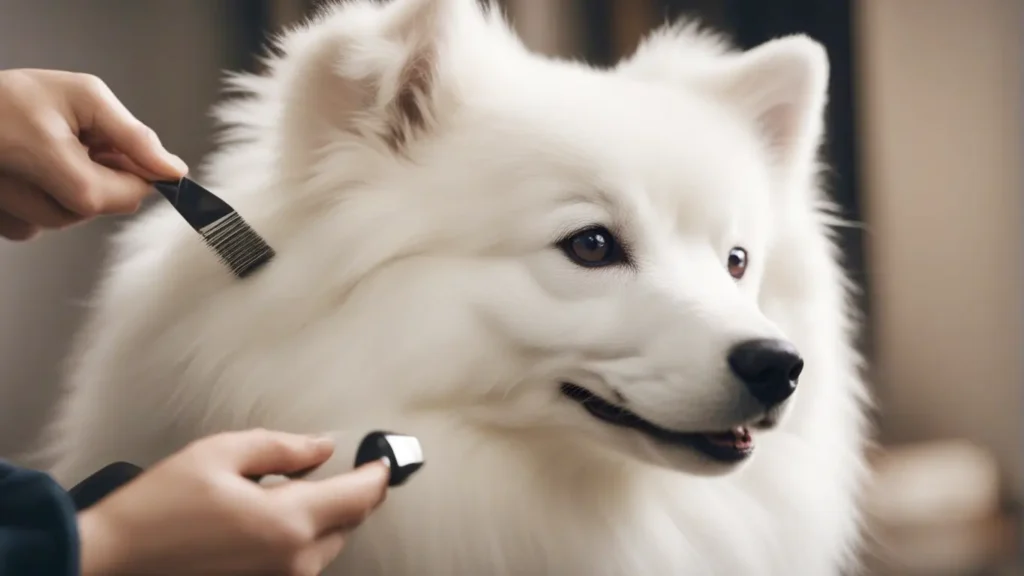
Bathe Strategically
While Eskies don’t require frequent bathing, bathing 1-2 times monthly can help loosen and remove excess shed fur. Always use a gentle dog shampoo. Excessive bathing can dry out their skin, so find a healthy balance. Time baths for during/after peak shedding seasons.
Provide Proper Nutrition
A healthy, balanced diet supports skin and coat health. Look for high-quality dog foods rich in omega fatty acids. Supplements like fish oil can further help reduce shedding. Always talk to your vet before making diet changes.
Control Environmental Allergies
Allergies like dust mites or pollen can trigger excess shedding and skin irritation. Keeping your home clean and avoiding allergy triggers can help. Your vet can also recommend dog-safe allergy medications as needed.
Groom and Massage Frequently
Regularly massaging your Eskie’s skin helps distribute oils and stimulate circulation for a healthy coat. Pair massage with frequent brushing and bathing to manage shedding.
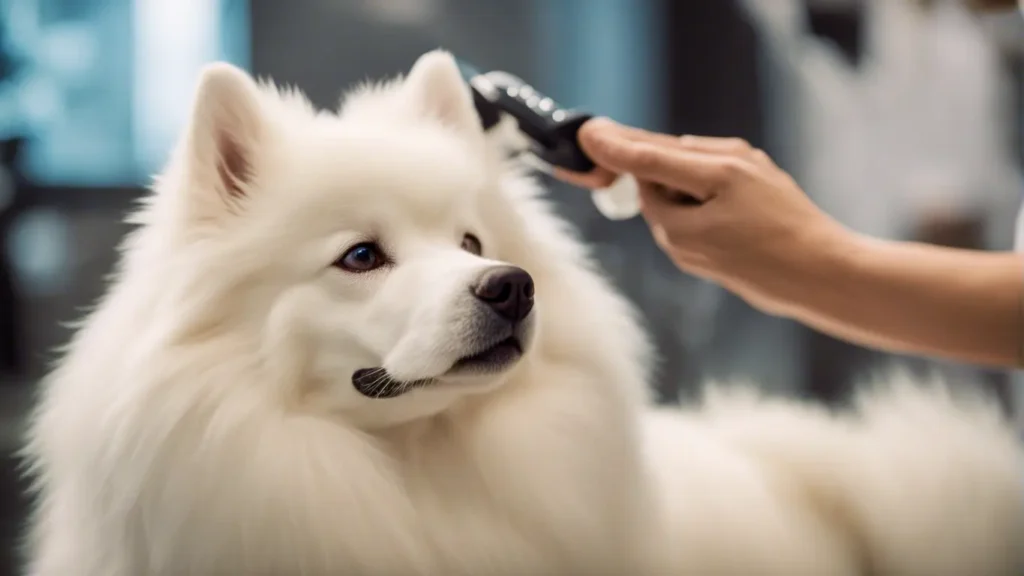
These proactive tips will help you stay ahead of the shedding game! With time and practice, you can keep your home and clothes fur-free.
How to Groom an American Eskimo Dog’s Coat
Grooming an American Eskimo Dog is an essential ritual. Their thick double coats require thorough brushing and maintenance. Follow these steps for grooming success:
Assemble Deshedding Tools
Slicker brushes, undercoat rakes, combs, and mat splitters are must-have tools. Always use high-quality grooming products to avoid irritating their skin and coat.
Brush in Sections
Don’t try to brush their entire coat at once. Work in sections for a more thorough grooming session. Lift the fur section-by-section and brush down to the skin.
Bathe Regularly
Bathing helps loosen dead fur, so it’s easier to brush out. Bathe every 3-4 weeks with dog shampoo. Rinse thoroughly. Avoid over-bathing, as it strips natural oils.
Remove Mats Gently
Carefully work apart mats using your fingers or a mat splitter. Never rip or cut mats out, which can hurt or injure the skin.
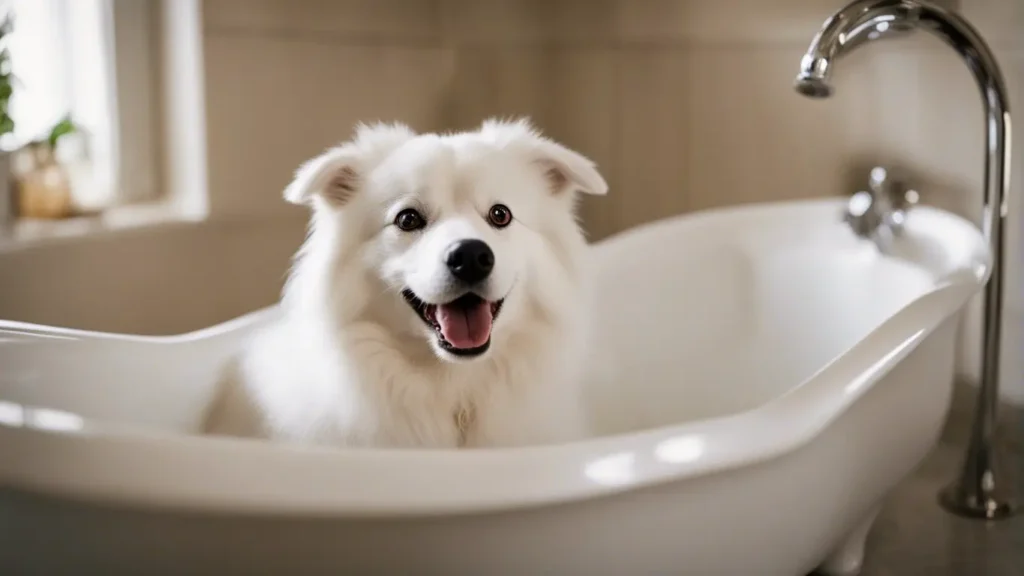
Discard Loose Fur
As you brush, the loose undercoat should effortlessly come out. Discard the wads of fur so they don’t get scattered around your house.
Reward Cooperation
Grooming sessions can seem tedious to your Eskie. Make it fun by praising them and providing treats for sitting still. This positive reinforcement ensures future cooperation.
With the proper techniques and tools, grooming your American Eskimo Dog can be enjoyable for you and your furry friend. Bonding time that keeps their coat healthy and looking picture-perfect.
How Often to Bathe an American Eskimo Dog
We know baths help control shedding in Eskies. But how often is too often when it comes to bathing?
The average American Eskimo Dog only needs bathing once every 3-4 months. Their coat naturally repels dirt and odors. But many owners bathe 1-2 times per month to manage shedding.
During peak shedding seasons, bathing weekly or bi-weekly can significantly reduce the amount of loose fur floating around. Just be cautious not to overdo it.
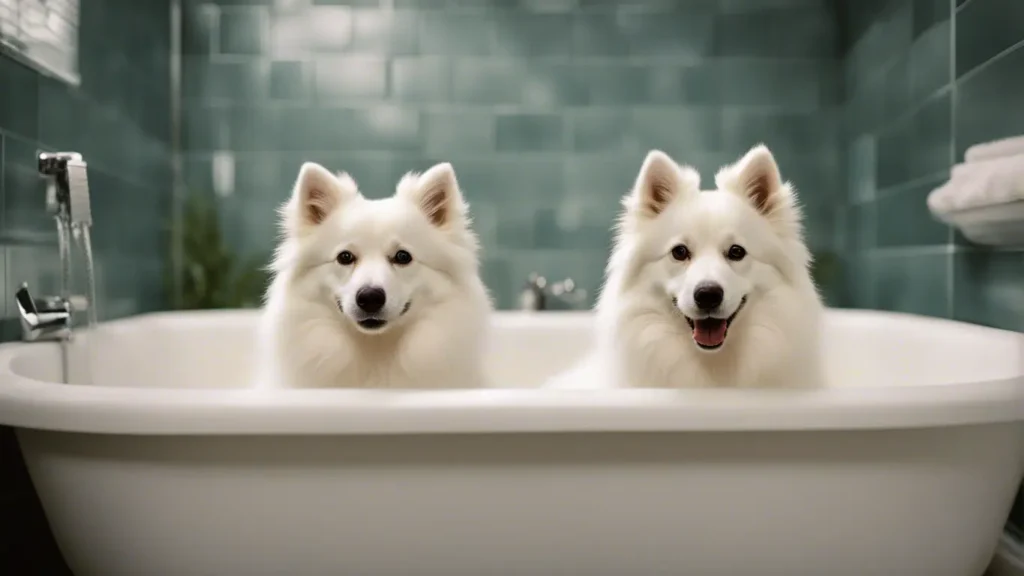
Signs it’s time for a bath:
- Dirt is visibly coating the coat
- Noticeable doggy odor
- Flakes/dandruff indicating dry skin
- Mats forming close to the skin
- Shedding is excessive between brushings
Tips for bathing:
- Brush thoroughly before and after
- Use lukewarm water
- Rinse thoroughly to avoid residue
- Use a dog-safe, gentle shampoo
- Air dry or gently blow dry on low heat
Follow up with a thorough brushing session to remove the loose hair unlocked by the bath. Proper bathing technique keeps your Eskie’s skin and coat healthy.
Shedding Prevention Tips for American Eskimo Dog Owners
Are you tired of the constant battle against shed fur? You can get the upper hand on shedding in your American Eskimo Dog with the proper prevention approach.
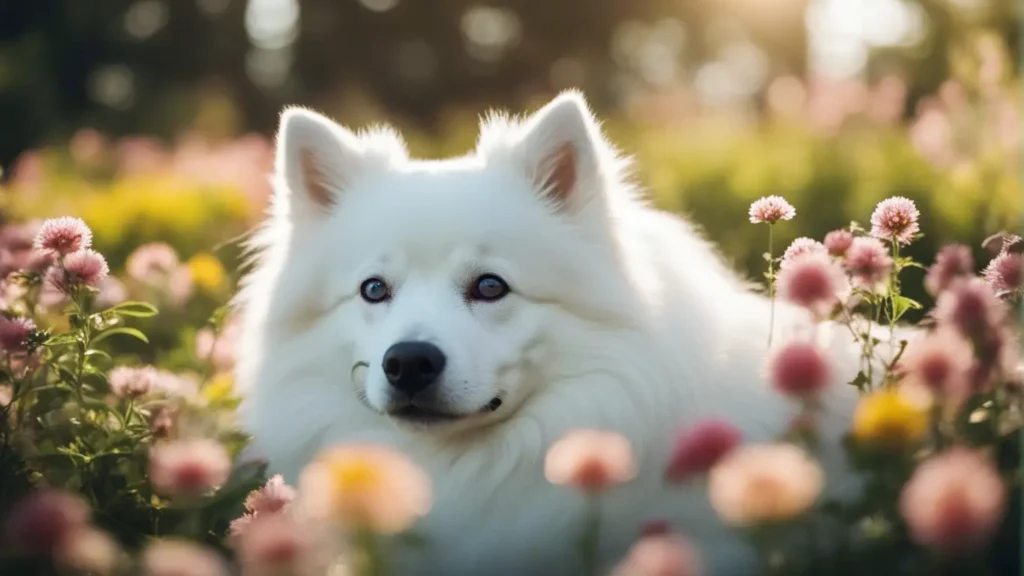
Here are pro tips for owners:
- Invest in a high-quality vacuum and use it daily. Canister vacuums with attachments designed for pet hair are ideal.
- Brush outside whenever possible to avoid scattering loose fur in your house.
- Stick to a consistent grooming schedule. Mark it on your calendar if needed.
- Feed a balanced, high-quality diet. Look for dog foods designed to support skin and coat health. Ask your vet about supplement recommendations.
- Use furniture covers on your couch/chairs. Wash them regularly to remove embedded fur.
- Bathe and brush your Eskie frequently during peak shedding seasons.
- Keep your home clean and limit fabrics/upholstery that attract shed fur.
- Always check for little fur tumbleweeds in corners and under furniture. Ball them up promptly with tape.
- Consider placing soft dog crates in rooms to confine shedding.
- Invest in an air purifier to trap airborne pet dander.
You can stay one step ahead of shed fur with diligence and proactive care. Keep these tips in mind for a clean, fur-free home.
American Eskimo Dog Shedding: Final Tips
Owning an American Eskimo Dog comes with fluffy cuddles and constant cleaning. However, a maintenance regimen focused on thorough brushing, strategic bathing, quality nutrition, and proactive clean-up will help you manage seasonal and daily shedding.
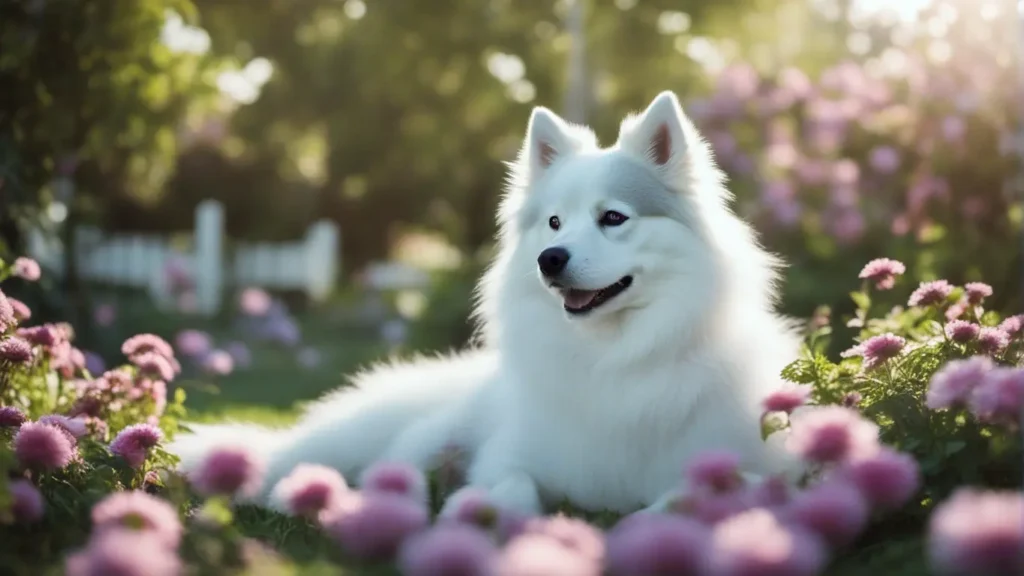
Some key takeaways:
- Expect heavy shedding year round, especially during spring and fall, blowing coat
- Invest in de-shedding tools and vacuum fur religiously
- Stick to a schedule of weekly or biweekly brushing sessions
- Bathe monthly or as needed to control loose fur
- Ask your vet about nutritional recommendations to support coat health
- Respond promptly to seasonal changes in shedding
While Eskie shedding can sometimes seem relentless, preparation is vital to staying fur-free. With a consistent grooming approach, you can confidently flaunt your furniture again! Enjoy your fluffy yet controlled-furred friend.